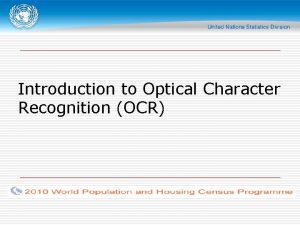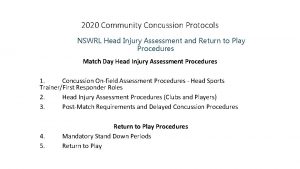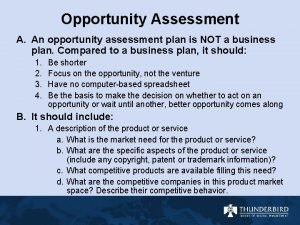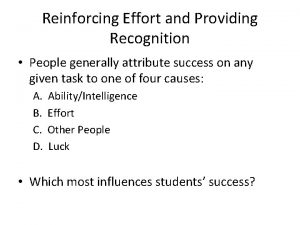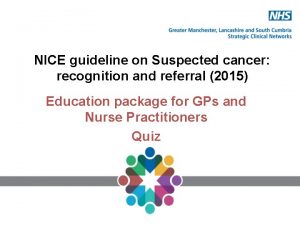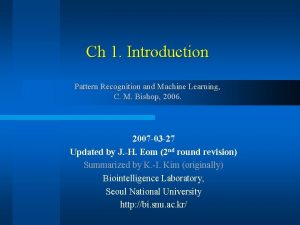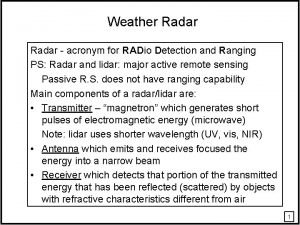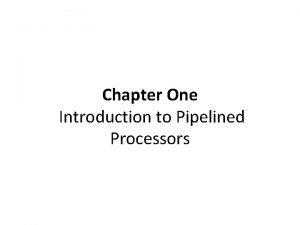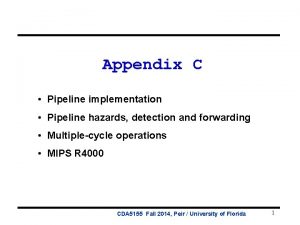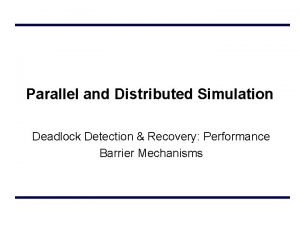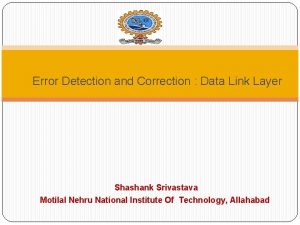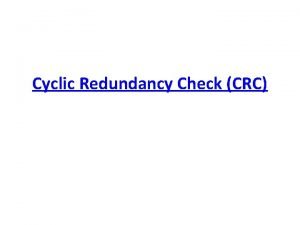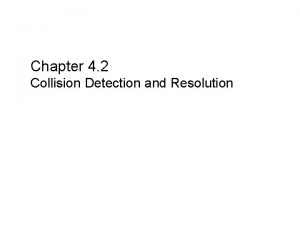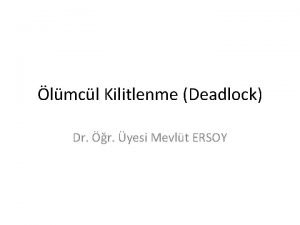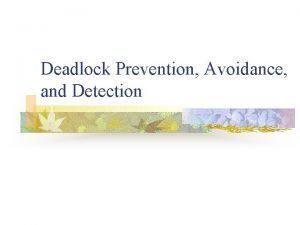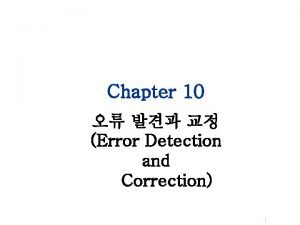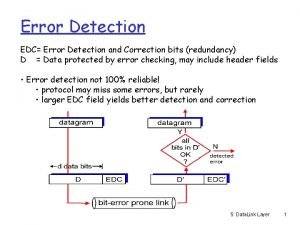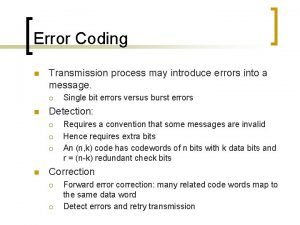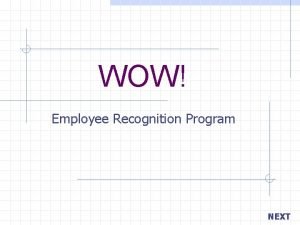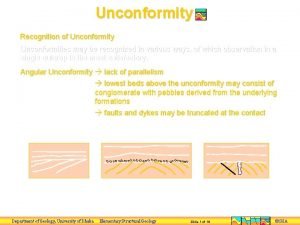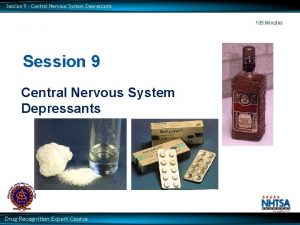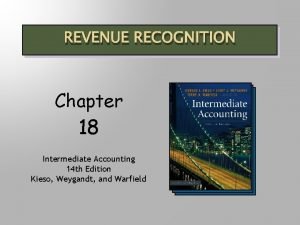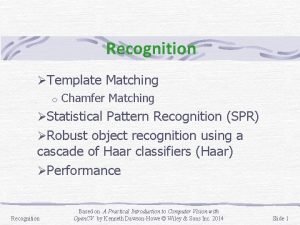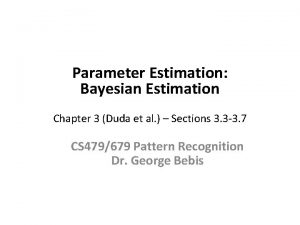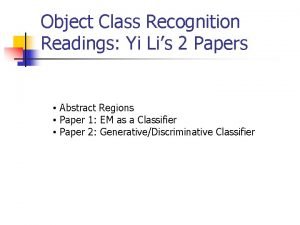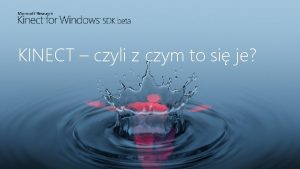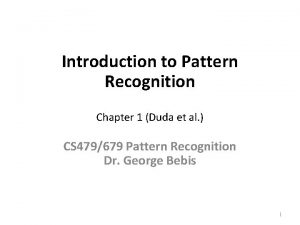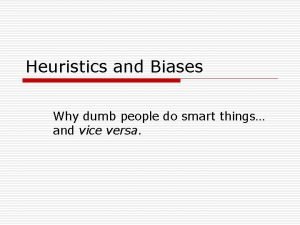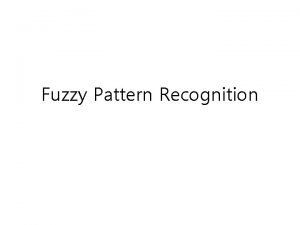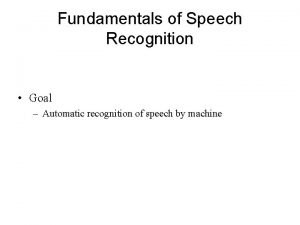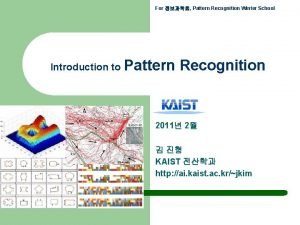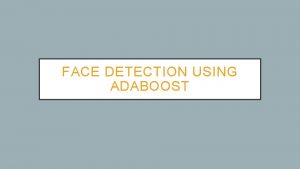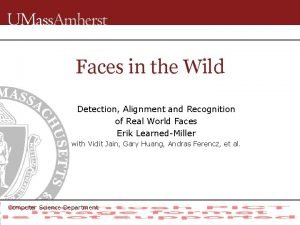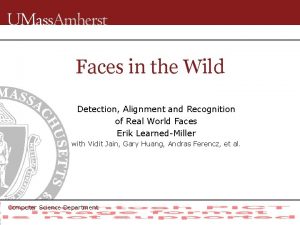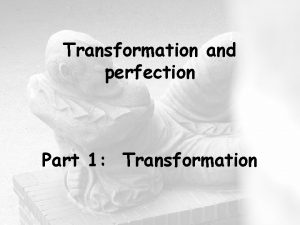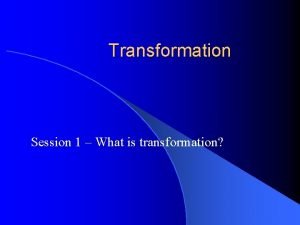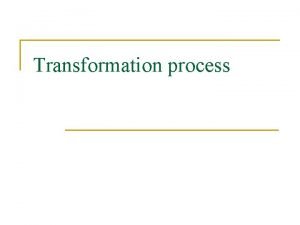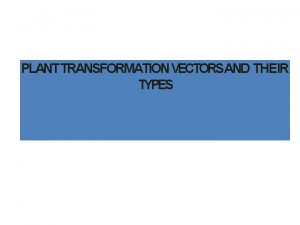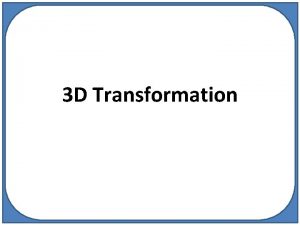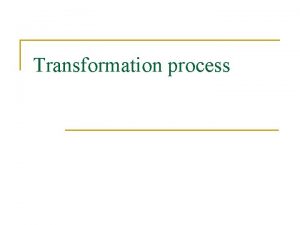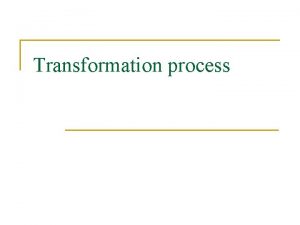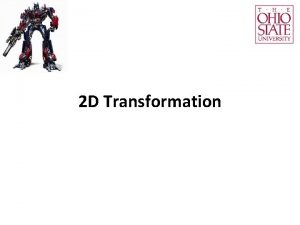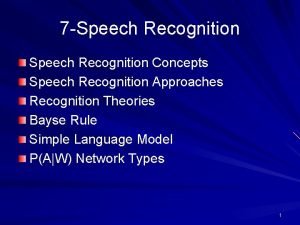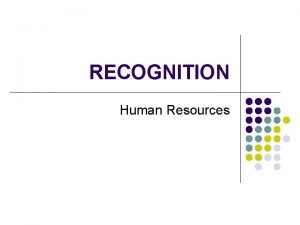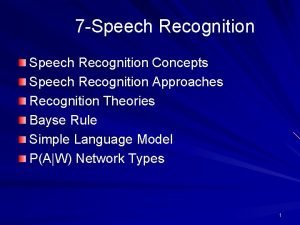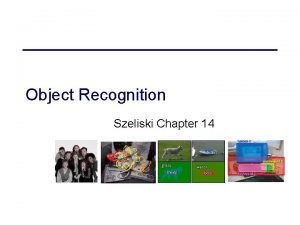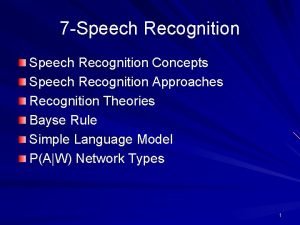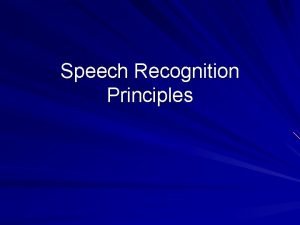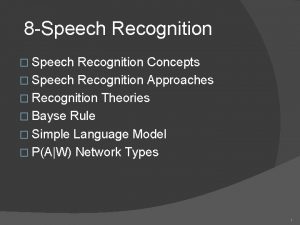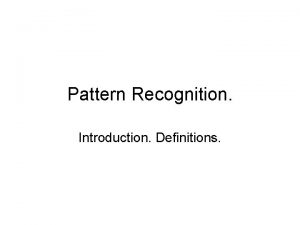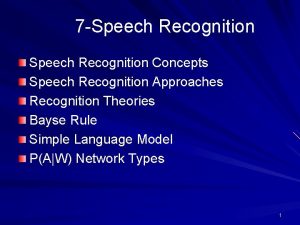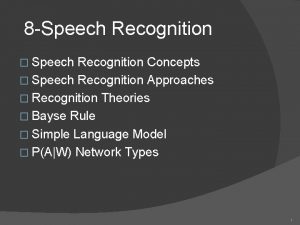Understanding Faces Detection Recognition and Transformation of Faces































































- Slides: 63

Understanding Faces Detection, Recognition, and Transformation of Faces Lucas by Chuck Close 12/1/15 Chuck Close, self portrait Some slides from Amin Sadeghi, Lana Lazebnik, Silvio Savarese, Fei-Fei Li

Exams back on Thursday

Face detection and recognition Detection Recognition “Sally”

Applications of Face Recognition • Digital photography

Applications of Face Recognition • Digital photography • Surveillance

Applications of Face Recognition • Digital photography • Surveillance • Album organization

Consumer application: i. Photo 2009 http: //www. apple. com/ilife/iphoto/

Consumer application: i. Photo 2009 • Can be trained to recognize pets! http: //www. maclife. com/article/news/iphotos_faces_recognizes_cats

Face detection Detection

What does a face look like?

What does a face look like?

What makes face detection hard? Expression

What makes face detection hard? Viewpoint

What makes face detection hard? Occlusion

What makes face detection and recognition hard? Coincidental textures

Consumer application: i. Photo 2009 • Things i. Photo thinks are faces

How to find faces anywhere in an image? • Filter Image with a face?

Train a Filter Normalize mean and standard deviation SVM 19

Face detection: sliding windows … Filter/Template Multiple scales

What features? Exemplars (Sung Poggio 1994) Edge (Wavelet) Pyramids (Schneiderman Kanade 1998) Intensity Patterns (with NNs) (Rowley Baluja Kanade 1996) Haar Filters (Viola Jones 2000)

How to classify? • Many ways – Neural networks – Adaboost – SVMs – Nearest neighbor

Face classifier Training Images Image Features Training Labels Classifier Training Trained Classifier Testing Image Features Test Image Trained Classifier Prediction Face

Face recognition Detection Recognition “Sally”

Face recognition • Typical scenario: few examples per face, identify or verify test example • What’s hard: changes in expression, lighting, age, occlusion, viewpoint • Basic approaches (all nearest neighbor) 1. Project into a new subspace (or kernel space) (e. g. , “Eigenfaces”=PCA) 2. Measure face features 3. Make 3 d face model, compare shape+appearance (e. g. , AAM)

Simple technique 1. Treat pixels as a vector 2. Recognize face by nearest neighbor

State-of-the-art Face Recognizers • Most recent research focuses on “faces in the wild”, recognizing faces in normal photos – Classification: assign identity to face – Verification: say whether two people are the same • Important steps 1. 2. 3. 4. Detect Align Represent Classify

Example of recent approach Deep. Face: Closing the Gap to Human-Level Performance in Face Verification Taigman, Yang, Ranzato, & Wolf (Facebook, Tel Aviv), CVPR 2014 Following slides adapted from Daphne Tsatsoulis

Face Alignment 1. Detect a face and 6 fiducial markers using a support vector regressor (SVR) 2. Iteratively scale, rotate, and translate image until it aligns with a target face 3. Localize 67 fiducial points in the 2 D aligned crop 4. Create a generic 3 D shape model by taking the average of 3 D scans from the USF Human -ID database and manually annotate the 67 anchor points 5. Fit an affine 3 D-to-2 D projection and use it to frontally warp the face

Train DNN classifier on aligned faces Architecture (deep neural network classifier) • Two convolutional layers (with one pooling layer) • 3 locally connected and 2 fully connected layers • > 120 million parameters Train on dataset with 4400 individuals, ~1000 images each • Train to identify face among set of possible people Face matching (verification) is done by comparing features at last layer for two faces

Results: Labeled Faces in the Wild Dataset Performs similarly to humans! (note: humans would do better with uncropped faces) Experiments show that alignment is crucial (0. 97 vs 0. 88) and that deep features help (0. 97 vs. 0. 91)

Transforming faces

t r i c • N e ae d v et ro a A gl ei Antonio Torralba & Aude Oliva (2002) g s. Averages: Hundreds of images containing a person are averaged to reveal regularities n in the intensity patterns across all the images.

How do we average faces? http: //www 2. imm. dtu. dk/~aam/datasets. html

Morphing image #1 warp image #2 morphing warp

Cross-Dissolve vs. Morphing Average of Appearance Vectors http: //www. faceresearch. org/ demos/vector Images from James Hays Average of Shape Vectors

Aligning Faces • N e e d t o A l i g n • PAlyosha Efros Images from

Appearance Vectors vs. Shape Vectors Appearance Vector of 200*150*3 Dimensions 200*150 pixels (RGB) Vector of 43*2 Dimensions Shape Vector 43 coordinates (x, y)

Average of two Faces 1. I n p u t f a c e k e y

Average of multiple faces 1. Warp to mean shape 2. Average pixels http: //www. faceresearch. org/demos/average http: //graphics. cmu. edu/courses/15 -463/2004_fall/www/handins/brh/final/

Average Men of the world

Average Women of the world

Subpopulation means • Other Examples: – – Average Kids Happy Males Etc. http: //www. faceresearch. org Average female Average kid Average happy male Average male

How to represent variations? • Training images • x 1, …, x. N

PCA • General dimensionality reduction technique • Finds major directions of variation • Preserves most of variance with a much more compact representation – Lower storage requirements (eigenvectors + a few numbers per face) – Faster matching/retrieval

Principal Component Analysis • Given a point set , in an M-dim space, PCA finds a basis such that – The most variation is in the first basis vector – The second most, in the second vector that is orthogonal to the first vector – The third… 2 nd principal x 1 component 1 st principal componentx 2 nd principal component x 0 1 1 st principal component x 0

PCA in MATLAB x=rand(3, 10); %10 3 D examples mu=mean(x, 2); x_norm = x-repmat(mu, [1 n]); x_covariance = x_norm*x_norm'; [U, E] = eig(x_covariance) U= 0. 74 0. 07 -0. 66 0. 65 0. 10 0. 74 -0. 12 0. 99 -0. 02 E= 0. 27 0 0. 63 0 0. 94

Principal Component Analysis First r < M basis vectors provide an approximate basis that minimizes the mean-squared-error (MSE) of reconstructing the original points Choosing subspace dimension r: • look at decay of the eigenvalues as a function of r • Larger r means lower expected error in the subspace data approximation eigenvalues 1 r M

Eigenfaces example (PCA of face images) Top eigenvectors: u 1, …uk Mean: μ

Visualization of eigenfaces (appearance variation) Principal component (eigenvector) uk μ + 3σkuk μ – 3σkuk

Can represent face in appearance or shape space Appearance Vector 200*150 pixels (RGB) Shape Vector 43 coordinates (x, y)

First 3 Shape Bases with PCA Mean appearance http: //graphics. cmu. edu/courses/15 -463/2004_fall/www/handins/brh/final/

Manipulating faces • How can we make a face look more female/male, young/old, happy/sad, etc. ? • http: //www. faceresearch. org/demos/transform Current face Prototype 1 Prototype 2

Manipulating faces • We can imagine various meaningful directions. Sad Masculine Current face Feminine Happy

Psychological Attributes

Human Perception






http: //leyvand. com/beautification 2008/ Which face is more attractive? beautified original

System Overview http: //leyvand. com/beautification 2008/

Things to remember • Face Detection: train face vs. non-face model and scan over multi-scale image • Face Recognition: detect, align, compute features, and compute similarity • Represent faces with an appearance vector and a shape vector • Use PCA for compression or to model main directions of variance • Can transform faces by moving shape vector in a given direction and warping
 It has 6 square faces 12 edges and vertices
It has 6 square faces 12 edges and vertices Recognition and regard for oneself and one's abilities: *
Recognition and regard for oneself and one's abilities: * With high honors
With high honors Difference between recall and recognition
Difference between recall and recognition Reinforcing effort and providing recognition
Reinforcing effort and providing recognition Introduction to ocr
Introduction to ocr Nrl head injury recognition and referral form
Nrl head injury recognition and referral form Opportunity assessment plan sample
Opportunity assessment plan sample Va handbook 5017 part iii appendix a
Va handbook 5017 part iii appendix a Reinforcing effort and providing recognition
Reinforcing effort and providing recognition Types of test
Types of test Incoterms and revenue recognition us gaap
Incoterms and revenue recognition us gaap Opportunity recognition shaping and reshaping
Opportunity recognition shaping and reshaping Praise, recognition and power are_______.
Praise, recognition and power are_______. Reinforcing effort and providing recognition
Reinforcing effort and providing recognition Shape matching and object recognition using shape contexts
Shape matching and object recognition using shape contexts Suspected cancer recognition and referral
Suspected cancer recognition and referral Suspected cancer recognition and referral
Suspected cancer recognition and referral Cm bishop pattern recognition and machine learning
Cm bishop pattern recognition and machine learning Celebrating performance accenture
Celebrating performance accenture Template matching
Template matching Radar stands for radio detection and
Radar stands for radio detection and Checksum in computer networks with example
Checksum in computer networks with example Hazard detection and resolution in computer architecture
Hazard detection and resolution in computer architecture Hazard detection and resolution
Hazard detection and resolution Deadlock detection and recovery
Deadlock detection and recovery Ids sensors
Ids sensors Error detection and correction in data link layer
Error detection and correction in data link layer Crc error detection
Crc error detection Collision detection and resolution
Collision detection and resolution Collide and slide algorithm
Collide and slide algorithm National breast and cervical cancer early detection program
National breast and cervical cancer early detection program Deadlock detection prevention and avoidance
Deadlock detection prevention and avoidance National breast and cervical cancer early detection program
National breast and cervical cancer early detection program Deadlock prevention and avoidance
Deadlock prevention and avoidance Error detection code
Error detection code E dc error
E dc error Difference between error detection and error correction
Difference between error detection and error correction Hamming distance in computer network
Hamming distance in computer network Crc in computer networks
Crc in computer networks Employee recognition proposal
Employee recognition proposal Chapter 18 revenue recognition
Chapter 18 revenue recognition Four part processing model for word recognition
Four part processing model for word recognition Recognition of unconformity
Recognition of unconformity Loss recognition testing
Loss recognition testing Drug recognition expert chart
Drug recognition expert chart Drug recognition expert chart
Drug recognition expert chart Chapter 18 revenue recognition kieso
Chapter 18 revenue recognition kieso Chamfer matching
Chamfer matching Problem recognition adalah
Problem recognition adalah Bayesian parameter estimation in pattern recognition
Bayesian parameter estimation in pattern recognition Object class recognition
Object class recognition What is network based application recognition
What is network based application recognition Recall vs recognition
Recall vs recognition Kinect for windows runtime
Kinect for windows runtime Iris xtract
Iris xtract Four part processing model for word recognition
Four part processing model for word recognition Vyr737
Vyr737 Convolutional neural networks for visual recognition
Convolutional neural networks for visual recognition A wand reader is a type of recognition device
A wand reader is a type of recognition device Recognition heuristic
Recognition heuristic Pattern recognition
Pattern recognition Fundamentals of speech recognition
Fundamentals of speech recognition Design cycle of pattern recognition
Design cycle of pattern recognition





